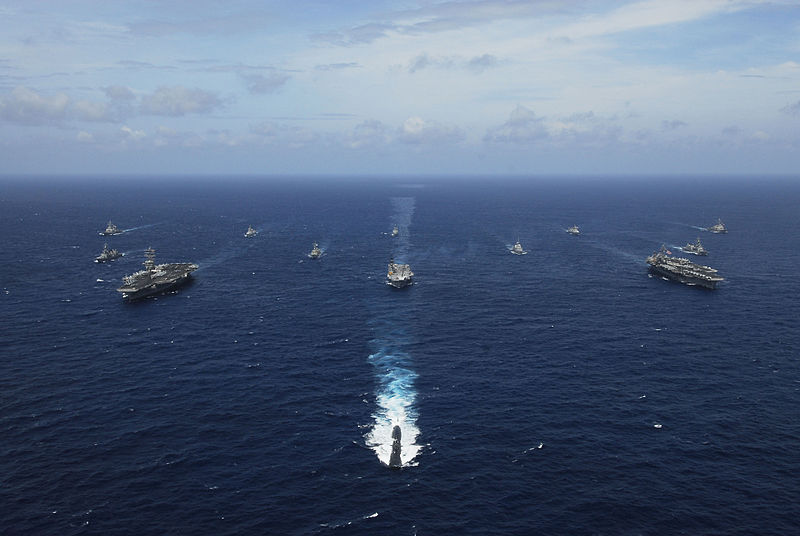On September 6, India and the US signed the Communications Compatibility and Security Agreement (COMCASA) in New Delhi on the conclusion of the first ‘two plus two’ round of bilateral talks between the countries. The agreement is supposed to facilitate access to advanced defense systems and will enable India to optimally utilize its existing US-origin military platforms. This is a modified version of the Communication and Information Security Memorandum of Agreement (CISMOA) discussed between two countries. Sushma Swaraj (minister of external affairs) and Nirmala Sitharaman (minister of defense) represented India, while Michael R. Pompeo (secretary of state) and James N. Mattis (secretary of defense) represented the US. According to sources, India also agreed to conduct its first ever tri-service (army, navy and air force) joint exercise with USA off its eastern coast in 2019.
The agreement is the third of the fourth foundational agreements based on treaties that the US signs with its close allies. The first was the General Security of Military Information Agreement (GSOMIA) that was signed in 2002. It provided for the sharing of military intelligence and required each country to protect the other’s information. In 2016, the Logistics Exchange Memorandum of Agreement (LEMOA) was signed. It formalized the rules for logistical support and exchange of supplies between the Indian and American armed forces. The fourth agreement will be the Basic Exchange and Co-operation Agreement for Geo-spatial Co-operation (BECA). This will facilitate the sharing of data inputs regarding battlefields and any form of information gathering methods.
India’s formal cooperation with the US in the field of defense started with the signing of the Agreed Minute on Defence Relations in January 1995. The move was widely criticized as a deviation from India’s independent foreign policy based on non-alignment. In 2005, the New Defence Framework Agreement was signed between the countries. It sought to enhance defense trade, personnel exchanges, joint exercises and co-operation in maritime security & anti-piracy operations. India’s abandonment of non-alignment gathered pace with the signing of the Indo-US nuclear deal in October 2008. Despite significant opposition from the left parties, India signed the deal, even as many observers pointed out the risks in terms of the country compromising its sovereign foreign policy and its decades of work on indigenous nuclear technology. The framework agreement was revised in 2015 and extended for another 10 years.
It is very clear by now that India is a key component of US strategic plans for the Indo-Pacific region, especially its attempt to contain Chinese influence. India too has actively taken up this role with steps such as intensified anti-piracy operations, as well as its participation in the annual trilateral (along with the US and Japan) joint maritime drills called the Malabar Exercises. America’s tendency to take a less obvious pro-Pakistan stance in recent times and a renewal of China-Pakistan ties through the China-Pakistan Economic Corridor under the Belt and Road Initiative (BRI) have all led India to pivot to the US.
These moves also need to be seen in the context of the chain of US bases in the region including Camp Lemonnier in Djibouti, Camp Justice in Diego Garcia, airstrips in the Gulf region etc. The Pacific command of US army, which has troops in South Korea, Japan, Guam and Hawaii, changed its name to the United States Indo-Pacific Command in May, indicating a renewed focus on the Indo-Pacific region. India has also sought to expand its strategic footprint by building naval facilities and airstrips in its Andaman and Nicobar islands and Assumption island in Seychelles and ensuring access to Changi port in Singapore and facilities in the Agalega islands.
Incidentally, even as such deals are being signed, the US shows no indication of conceding many of India’s demands, including a sanctions waiver that would enable it to continue importing oil from Iran. The US has also taken a harsh stance against India and China on the issue of trade deficits. On Friday, president Donald Trump declared that he wanted to stop subsidies to countries like India and China.





